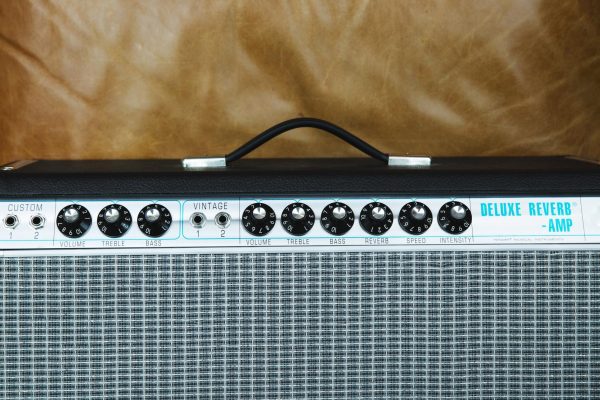Far Out: What you need to know from Apple’s September Event
Are any of the products Apple announced worth the upgrade?
September 15, 2022
Every year, Apple hosts multiple events to showcase new products and software. This year’s Far Out event on September 7, 2022, was just as exciting as the rest. Whether in person in the Steve Jobs Theater or tuning in online, everyone got to see a new iPhone and Apple Watch lineup along with a set of AirPods. However, the upgrades made to each lineup were not that major to the average user which raises the question if any of the new devices are worth the upgrade. In case you missed it, here is everything you need to know from Far Out.
The event on Wednesday, September 7th, kicked off with the Apple Watch lineup. The first watch to take the stage was the new Apple Watch Series 8. While visually similar, a lot of the changes are on the inside as a result of a combination of new software and hardware. The two most notable additions are new temperature sensors and Crash Detection.
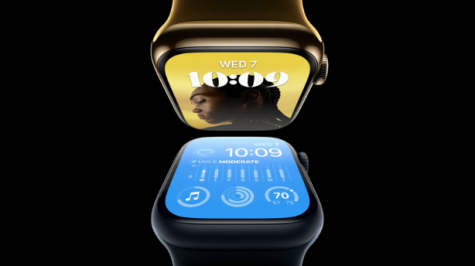
Two new temperature sensors will improve the Watch’s accuracy by reducing bias from the outside environment. There is one on the back of the watch, by the suite of existing sensors, and one on the front of the watch underneath the display. These sensors benefit everyone by providing users with more accurate sleep tracking. For women, the data from these two sensors can be used by the Cycle Tracking app to help provide improved insight into their ovulation and menstrual cycle schedule.
Crash Detection is a brand new Series 8 system that detects if the user is involved in a serious car crash. In such a scenario, the watch can automatically contact emergency services, send your current location, and notify your emergency contacts. This new safety feature was not easy to develop, requiring a complex interplay between mechanical and software algorithms. Crash Detection runs only when driving and processes data only when there is a chance of a crash, all on the watch itself.
Along with those two stand-out safety features, any cellular model Apple Watch Series 5 and above running WatchOS 9 will also get international roaming. Series 8 continues the previous Apple Watch features such as always-on display, rapid charging, blood oxygen measurements, and the ability to take an ECG, which can detect irregular heart rhythms. This year, the Series 8 holds 18 hours of battery life but can get up to 36 hours with a new Low Power Mode coming to Series 4 and above running WatchOS 9. There are four colors in 100% recycled aluminum (Midnight, Starlight, Silver, (Product) Red) and three colors in Stainless Steel (Silver, Gold, Graphite). The Series 8 is available on September 16 starting at $399 for GPS and $499 for GPS + Cellular.
Next on the program was a new Apple Watch SE, relatively unchanged from last year’s model. The SE received the same Crash Detection sensors as the Series 8. The new back case of the SE has been redesigned with nylon composite materials to color match the finish on the rest of the watch. The SE is available on September 16 in three 100% recycled aluminum finishes (Silver, Midnight, Starlight) for $249 with GPS and $299 for GPS + Cellular.
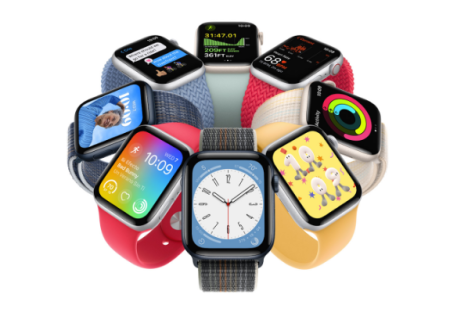
The final Apple Watch announced at Far Out was the Apple Watch Ultra. Described as the “most rugged and capable Apple Watch ever,” it is Apple’s first attempt to customize hardware and software for niche users. The Ultra blends an Apple Watch operating system with a rugged design to meet intense activities and conditions. It features a case made from aerospace-grade titanium which is raised up to protect the edges of the sapphire front crystal. The display measures a stunning 49mm making it the biggest and brightest display ever in an Apple Watch. There is a new Action Button on the opposite side of the Digital Crown and Side Button that is customizable to the user’s needs. Speaking of the Digital Crown, it is now larger with deeper grooves and the Side Button now sticks out from the side of the case. Both of these changes are intended to make the Ultra easier to use with gloves.
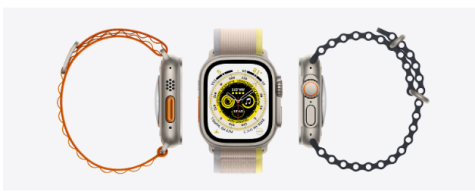
The structural improvements make the Ultra WR100 water resistant, pitched at divers. A new diving Depth App launches automatically when submerged, showing current depth, underwater time, and current temperature. It is also certified to EN13319, the international standard for dive computers and gauges. Coming later is a partnership with Huish Outdoors for an exclusive app, Oceanic+, that converts the Ultra into a dive computer for up to 130 feet and holds all the key features for recreational scuba divers.
The Ultra features a second speaker to help with sound volume and clarity outdoors and can be used as an 86-decibel siren that can be heard up to 600 feet away. Three new microphones were added along with software to help make voice calls clearer in windy conditions. Unlike previous Watches, cellular is a standard feature. The battery is also a champion, now capable of 36 hours per charge, with a forthcoming optimization promising up to 60 hours. The Ultra also gets its own customizable watch face design called Wayfinder. It houses a compass in the center and can be customized for the mountain, ocean, or trail. With a turn of the Digital Crown, the entire watch face turns red for low-light scenarios.
The Ultra also has a new Precision Dual Frequency GPS, setting a new standard for accurate positioning in dense conditions. The new Compass app builds on this technology, allowing users to add waypoints and remember their previous travel path in a feature called Backtrack. For safety, Backtrack turns on automatically when you go off the grid.
Apple also engineered three new Ultra bands customized for hiking, hitting the trails, and diving. All of that combines Ultra’s price tag, $799 for GPS + Cellular, available on September 23.
With the Apple Watch lineup complete, the focus turned to the AirPods Pro. A new H2 chip provides better noise cancellation as well as Adaptive Transparency which reduces loud noises when the earbuds are feeding in the sound around you. The force sensors in the refreshed AirPods Pro allows for volume adjustment right on the earbuds. The battery life increased by 33% allowing for 6 hours of listening time per charge. With the case, there is a total of 30 hours of listening time, up of 6 hours from previous models. Improvements to the case include the addition of the U1 chip to support precision finding, an external case speaker for audible alerts (for pairing, low battery warnings, and when pinging the case), a lanyard loop, and the option to be charged via the Apple Watch Charger. The new Airpods Pro is available on September 23 for $249.

With all the accessories out of the way, it was time for the iPhones to take the stage. First up are the iPhone 14 and the new edition, the bigger iPhone 14 Plus. The iPhone 14 has a 6.1” OLED display and the iPhone 14 Plus has a 6.7” OLED display, each with an aerospace-grade aluminum frame. The display supports Dolby Vision for more vibrant videos and screen-protecting Ceramic Shield to help protect against the drops. The 14 and 14 Plus have an updated thermal design to further improve the performance of the A15 Bionic chip, the same chip as the iPhone 13 Pro, that both phones now contain. Crash Detection from the Apple Watch Series is also a part of the update.
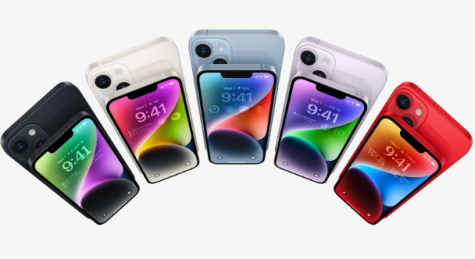
The most groundbreaking feature of the iPhone 14 and iPhone 14 Plus this year is Emergency SOS vis Satellite. When you are in trouble in a remote location without a cellular connection, this feature could be a lifesaver. Apple’s software guides users on the optimal angle to make contact with communication satellites, then compresses text messages that alert emergency responders. If local emergency centers require a voice call instead, relay centers will call based on the received text messages.
The cameras on the 14 and 14 Plus also got an upgrade. There is a new 12-megapixel main camera with improved image stabilization. Users should see a 49% improvement when shooting in low light, and night mode is now twice as fast. The front camera now gains autofocus, making selfies even sharper. Ultra-wide shots are at least twice as fast on the iPhone 14 models as compared to their iPhone 13 counterparts, and the Camera app’s new Action Mode makes video look more stable with software instead of extra bulky hardware.
Both models get all-day battery life, with the iPhone 14 Plus getting the best battery life ever in an iPhone. There are 5 colors offered across both models including Midnight, Starlight, Blue, Purple, and (Product) Red. The iPhone 14 will be available on September 16 starting at $799 and the iPhone 14 Plus will be available on October 7 starting at $899.
Next was the pro-level iPhones, iPhone 14 Pro, and iPhone 14 Pro Max. Each comes with the same features as the base-level iPhones but boasts additional features. Both are encased in surgical-grade stainless steel casing and have Ceramic Shield protecting the Super Retina XDR display glass. Opponents of the “notch” at the top of iPhone screens in recent years can take heart, as the redesigned TrueDepth camera system translates to a 30% smaller cutout. Known as Dynamic Island, it can dynamically grow and shrink to encompass information such as calls, now playing, connection notifications, charging status, and much more. The display as a whole now has even thinner borders and more brightness. Improved display technology with ProMotion allows an always-on display to come to iPhone. This will allow lock screen information to always be available whenever you take a glance.

The camera system on the Pro iPhones also received an upgrade to a whopping 48-megapixel sensor, improved optical image stabilization, and a 100% improvement in low-light performance. Low-light performance in telephoto and ultrawide formats are 2-3 times better. Professionals will appreciate that ProRAW can now shoot in 48 megapixels. All the cameras support Dolby Vision and have Action Mode.
Powering all of the new features in the Pro level iPhones is a new A16 Bionic chip which is 40% faster than the competition. The iPhone 14 Pro starts at $999 and the iPhone 14 Pro Max starts at $1099. Both are available in Deep Purple, Gold, Silver, and Space Black on September 16.
This year the upgrades were overall quite minimal for the average user. Emergency SOS via Satellite and Crash Detection were both technologically impressive but not features that impact everyday use. While performance athletes and those who work in extreme elements will appreciate the rugged and thoughtful design of the Apple Watch Ultra, did Apple do enough for people to immediately upgrade from their older generation Apple products? Time will tell.






